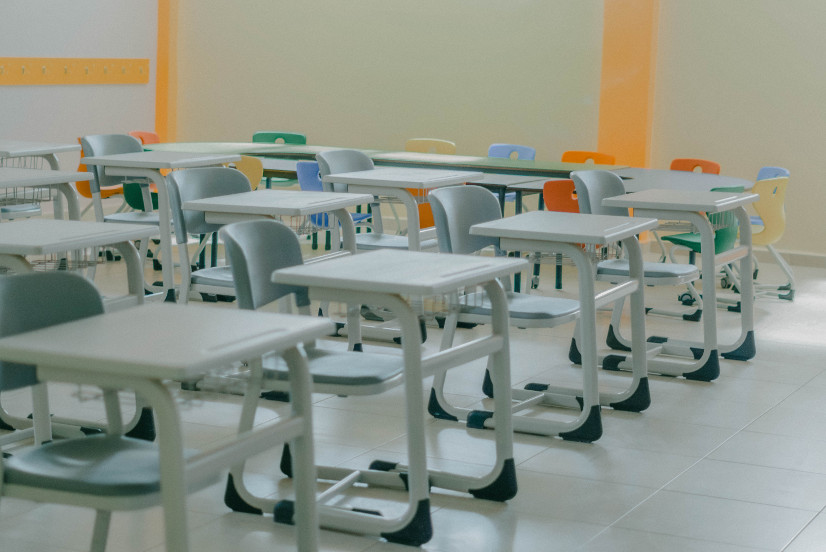School facility management (FM) professionals provide an invaluable service to pupils, teachers and other members of the community. Research shows that well-maintained facilities improve educational outcomes for children while boosting staff morale and retention.
As any janitor will tell you, ensuring that school premises are clean, safe, and physically appealing is extremely challenging. However, a new generation of school facility management software is now emerging. It is increasingly designed to help school FM teams to deliver a more efficient, more secure and more productive service.

What is school facility management?
School facility management is a vital role that ensures that educational institutions are safe and pleasant spaces while meeting the needs of users. Depending on the size of the school, FM teams can have a very long list of duties and responsibilities.
School facility managers ensure that educational institutions are clean, comply with safety regulations, and have adequate inventory and stock. They also need to reactively solve problems as and when they arise. Without good quality facility management, schools would quickly fall into disrepair and become dangerous places to learn and work. High levels of footfall, a wide variety of activities taking place on-site, and health & safety risks mean that continual maintenance and management is vital.
Estate professionals: Complete overview of estate management digital transformation
The unique challenges of school FM teams
Managing school facilities has always been complex, and this has become even more challenging in recent years. Here are some of the key issues facing school facility management professionals:
- Budgets: Due to wider changes in the economy, many schools have faced funding freezes for several years, despite rising costs. This means facility managers need to do more with less.
- Coronavirus: The pandemic has increased awareness of the issue of ventilation in many classrooms, pushing air quality to the top of many facility management professionals’ priority lists.
- Variety of users: Schools are used by a wide variety of people within communities (in addition to pupils and teachers). Managing sites for different groups adds a layer of complexity – for example, there may be extra accessibility requirements.
- Geographic spread: Many schools’ facilities are managed through PPI agreements, whereby contractors and subcontractors maintain several schools in a council area. Because of this geographical spread, and the variety of buildings to oversee, management is much more challenging.
- Unique characteristics of schools: Managing school facilities comes with several other unique challenges. These include the variety of spaces to oversee (heritage buildings, sports fields, playgrounds) to specific risks (fire, dangerous chemicals in science labs), the challenges of working with children (vandalism, security that supports safeguarding) and the seasonal nature of school facility management (long holidays with little use, followed by intense terms of heavy use).
The emergence of school facility management software
To address these kinds of challenges, a growing number of in-house and outsourced FM teams use school facility management software.
Until relatively recently, the use of IT in school FM was fairly rudimentary. Schools might use email to communicate about things like fire drills, faults or cleaning. Some turned to widgets on their intranets to support help requests. Meanwhile, facility managers would use a mixture of spreadsheets, paper checklists and physical inspections to manage their workloads.
Today, however, you can access software that provides more powerful features, tailored to the needs of FM staff.
So, what is school facility management software and what can it do?
- Manage requests: Using smartphone apps, staff or FM teams can raise requests for things like damaged equipment, cleaning graffiti or inventory. Being able to make requests via an app makes it much easier to report issues.
- Task allocation: With school facility management software, the in-house janitor or the outsourced facility management company can allocate tasks to employees or subcontractors and then verify the work has been done.
- Create checklists and reminders: From within a single software solution, it is possible to create checklists for preventative maintenance, one-off tasks or long term projects, thereby helping you to manage work more efficiently.
- Conduct inspections: Using a school facility management software solution allows you to conduct inspections of things like fire safety measures, damaged pipes and electrics or inventory, and mark up any problems on a blueprint of the school.
- Produce reports: Whether it is for health & safety or fire risk assessments, school facility managers must frequently produce reports which demonstrate compliance with relevant legislation. Once again, school facility management software can produce these reports quickly and efficiently.
Related reading: Find out how PlanRadar’s building management software can optimise your operations
Are you using school facility management software yet?
Although many in-house or outsourced school facility management professionals continue to rely on manual, paper-based approaches to maintaining educational institutions, a growing number are turning to school facility management software. Not only does this technology help them work more efficiently, it can also improve safety, reduce risks and save money.
If you are considering using facility management software for your educational estate, contact PlanRadar today. Our easy-to-use cloud-based platform is accessible via mobile and desktop applications. Its flexible features can help school facility managers with almost every aspect of their work. You can begin using a free trial of PlanRadar to see how it would work for you or contact us for a more in-depth demo.


